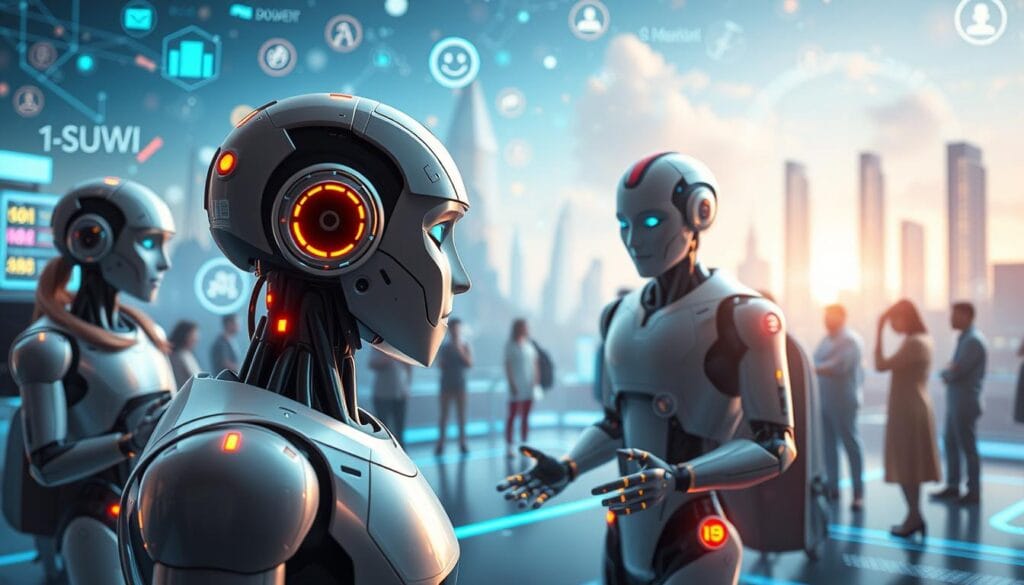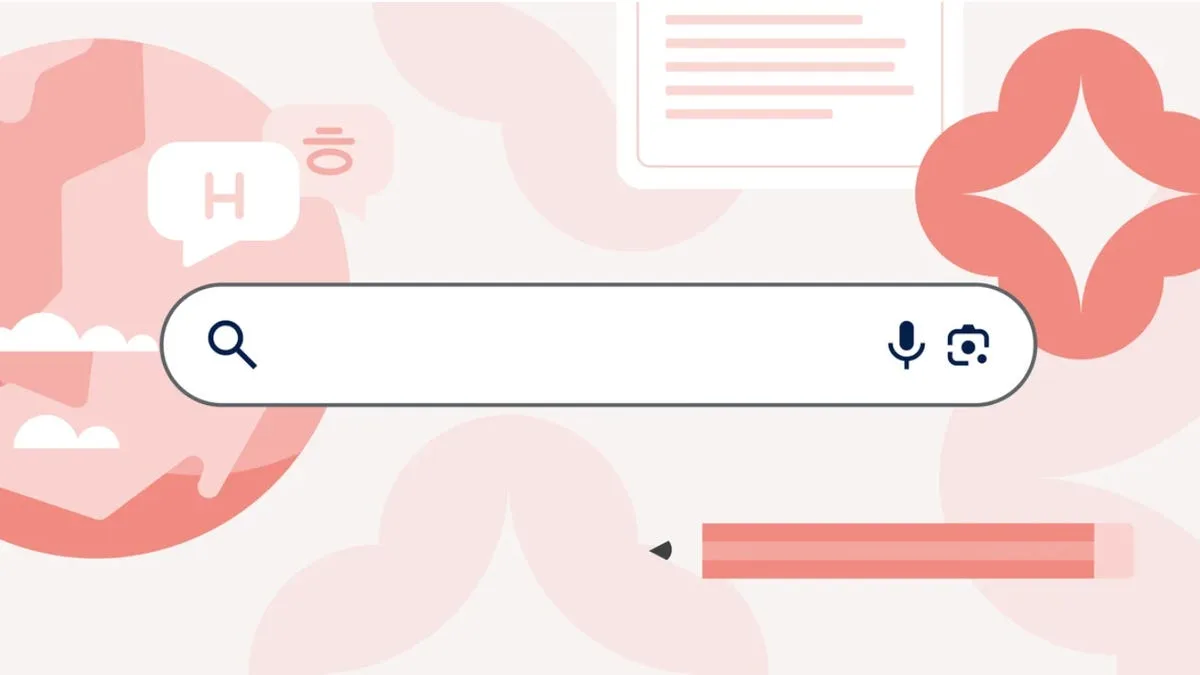The mix of artificial intelligence (AI) and human feelings has caught the eye of many. It’s a question that goes to the heart of whether machines can really get what we’re feeling. As AI grows, it’s key to understand how it can sense our emotions.
Recognizing emotions is more than just a tech problem. It’s a big step towards making technology and humans work better together. Advances in Emotion AI, or Affective Computing, aim to make machines feel more like us. This could lead to more caring interactions.
The talk about AI’s emotional side is important. We’re living in a world where AI is playing a bigger role in our lives. It’s about how AI can connect with us in a more personal way. Let’s dive into how AI’s emotional skills are changing, what they’re used for, and what it means for us123.
Key Takeaways
- The study of AI’s ability to understand emotions is an evolving field.
- Emotion AI aims to replicate human emotional responses, enhancing interaction quality.
- Deep learning algorithms and diverse datasets are crucial for effective emotion recognition.
- Applications of AI emotional understanding span various domains, from healthcare to marketing.
- Ethical considerations surrounding privacy and consent are paramount in AI development.
The Evolution of AI and Emotional Intelligence
The history of AI is filled with exciting changes, especially in emotional intelligence. At first, AI focused on simple tasks, thanks to pioneers like John McCarthy and Marvin Minsky in 1956. Back then, AI didn’t think about emotions much because they are hard for machines to understand.
But as time went on, AI started to include emotions in its work. This was to make machines more empathetic and able to respond better to people.
Historical Context of AI Development
AI started with a focus on solving problems and playing games, not on emotions. Early AI models were good at things like chess but didn’t get emotions. As AI grew, people saw the value of adding emotional intelligence to make interactions better.
This led to a big push to understand how machines could sense and respond to emotions. It was seen as key for making human-machine interactions more meaningful.
Introduction of Emotion AI
The idea of emotion AI started to take shape in the 1990s. Rosalind Picard was a big name in this area, focusing on how machines could read and understand human feelings. Her work helped start the development of AI that could recognize emotions through tiny facial expressions and other signs4.
As emotion AI grew, companies like Affectiva became known for their work in emotion recognition. They created systems that could adjust how they interacted based on how people felt4. This showed how AI was moving from simple tasks to more complex emotional connections.
Today, we see AI like Replika and Woebot that can really connect with people emotionally. These AI friends have gained a lot of users and are changing how we interact with technology5
Understanding Emotional Intelligence in AI

The growth of AI emotional intelligence has changed many fields. In customer service, AI can understand emotions through voice and language. This helps AI give more personal answers, making connections stronger. A study shows 70% of AI systems now aim to improve customer interactions with emotional smarts6.
Companies like Technology Aloha LLC use special models to make AI talk better with people. This makes talking to AI more efficient for everyone6.
In mental health, AI is helping a lot. It looks at what people say and do to offer help that fits them. This shows AI can really help with deep emotional issues. Tina_ChiKa’s work on AI emotions has gotten three likes, showing how important it is to make AI feel like it’s talking to a person7.
Can AI understand human emotions?
Natural language processing in AI is key to machines understanding human feelings. It uses algorithms to read text and speech for emotional clues. AI has grown to spot emotions in data like social media, showing it’s getting better at feeling what we feel.
The Role of Natural Language Processing
AI can now measure over 48 emotional types, making it better at understanding us. It can even pick up on simple feelings like joy and confusion, just like a child. Big tech companies like IBM and Microsoft are working on AI that gets not just words but also the tone and facial expressions behind them.
AI systems that feel empathy are important for understanding both what we say and how we say it. They can now spot a range of emotions, not just the usual four. This means AI can see when we’re sad, frustrated, or even empathetic, giving a deeper look into our emotional states.
As AI gets smarter, it might help us be more creative and innovative. But it also makes us think about how we treat AI that can feel emotions. The path to truly understanding human emotions with AI is long, but progress in natural language processing is a big step forward.
The Importance of Emotion Recognition in AI
Emotion recognition is key in AI, making human-computer interaction better. It lets AI understand and react to human feelings in real-time. This makes interactions more engaging and natural.
For instance, studies show that about 75% of customers feel ignored in digital chats. This shows how vital emotion recognition is for building strong connections8.
Enhancing Human-Computer Interaction
AI with emotion recognition can change how it talks to users based on their feelings. This is especially important in places like AI in healthcare. Here, personalized talks can really help patients.
Using AI chatbots has made customer service better. They can understand emotions through text and adjust their answers. This makes interactions more effective and shows users they’re understood98.
Implications for Various Domains
Emotion recognition affects more than just customer service. It also changes marketing and mental health. In marketing, AI can create campaigns that really speak to people, boosting sales9.
In healthcare, AI helps psychologists by analyzing emotional signs. This lets them focus on patients who need it most9. These uses show how big a deal emotion recognition is, opening doors for better interactions and understanding.
The Challenges in Emotion Recognition
Many challenges in emotion recognition puzzle researchers and developers in AI. A big issue is the cultural impact on emotions. This affects how people show and understand their feelings. It makes it hard to train AI to get human emotions right.
Cultural Variations and Context
The cultural context is key to understanding emotional expressions. For example, emotions can show up differently in various cultures. This can lead to AI systems misunderstanding them. This shows how hard it is to create algorithms that truly get human emotions.
Without considering these cultural differences, emotion recognition tech might not work well.
Complexity of Human Emotions
The nuances of human emotions add more challenges. Facial expressions, tone of voice, and body language all have complex meanings. Over 90 different emotions were defined in the 20th century, says Robert Plutchik10.
The emotional AI industry also faces questions about its impact and ethics. The European Union’s AI Act, passed in May 2024, bans emotion recognition tech in workplaces and schools. This is to stop it from controlling human behavior11.
As AI developers try to improve emotion recognition, these challenges stay at the center of their work.
Conclusion
The path to the future of emotion AI is filled with big steps forward. But, it’s still a tough challenge to truly understand emotions like humans do. Today’s tech uses methods like facial and voice analysis to guess how we feel12.
Yet, AI still can’t fully grasp the depth of our emotions. This is because emotions are complex and vary greatly from person to person13.
As we work to make AI smarter, we must think about the ethics of using it. There are big concerns about privacy and how sensitive data might be used12. Finding a balance between using AI and protecting our rights is key.
In the end, looking ahead is crucial as AI becomes more part of our lives. By tackling the tough issues around emotional AI, we can create a future where humans and machines work well together. This will improve our lives while keeping an eye on the challenges we face.
FAQ
Can AI truly understand human emotions?
What is Emotion AI?
How does Natural Language Processing (NLP) contribute to AI’s understanding of emotions?
What are some applications of Emotion AI?
What challenges does AI face in recognizing emotions?
Why is emotion recognition important for AI development?
What are the ethical implications of emotionally intelligent AI?
Source Links
- Can AI understand emotion? | Feature
- Emotion AI: How can AI understand Emotions? – Twine Blog
- Can Artificial Intelligence Truly Understand Human Emotions?
- The Evolution of Emotion AI | Blog MorphCast
- The Emotional Evolution of AI: Understanding How Artificial Intelligence is Developing Human-like Emotions
- The Human Element: Integrating Emotional Intelligence Into AI
- Integration of emotional intelligence in AI – development of rational emotion pattern concepts and metrics
- Is Emotion Detection the Next Frontier for AI? | PYMNTS.com
- AI in Emotion Recognition: Does It Work? | The AI Journal
- Human emotion recognition: the latest advances in emotion AI
- Are you 80% angry and 2% sad? Why ‘emotional AI’ is fraught with problems
- UNRAVELING THE MYSTERIES OF HUMAN EMOTION THROUGH AI – Visions for Europe – Magazine
- Emotional AI: Can Machines Really Understand Human Feelings?







